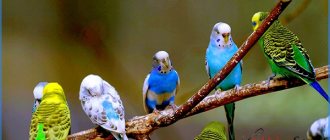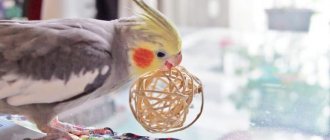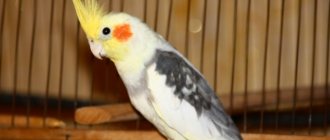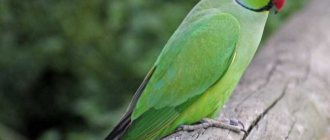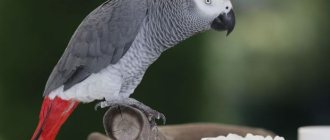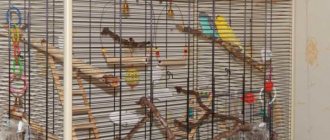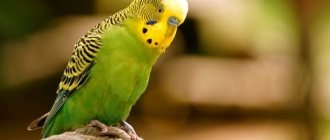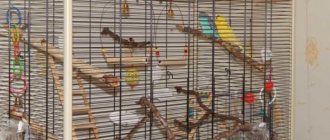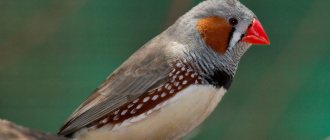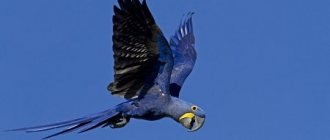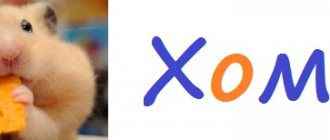A worthy companion for beginners and experienced bird keepers is the necklace parrot: there are practically no problems in caring for and maintaining this good-natured beauty. The calm bird is famous for its easy-going character and freely makes contact with humans. What a peace-loving ringed parrot looks like, what to look for when choosing, what are the features of care - this will be discussed further.
General description and features
Ringed parrots gather in large colonies because they cannot stand being alone. Birds are noisy and hyperactive, so they are not suitable for keeping at home in families with small children. Parrots spend most of their time flying. They have weak legs. When moving on the ground, they help themselves with their beak. The most common species in captivity is the Indian ringed parakeet.
The feather color of most species is grass-green with a yellowish tint. The body size ranges from 30 to 50 cm (depending on the species). A black stripe stretches from the base of the beak to the inner corner of the eye.
Description and features of the Necklace parrot
A specific feature of the ringed parrot is its black necklace. Males have a black tie with a pink border. In the female, the necklace is not clearly defined and consists of a wide line of dark feathers.
Vegetables as a source of nutrients
Vegetables for feeding your pet are no less useful than fruits and berries. The most preferred of these are pieces of carrots, cabbage (Peking cabbage, cauliflower, broccoli), zucchini, and beets. Birds also love to eat cucumbers and tomatoes.
At the same time, before feeding the parrots, hard varieties of vegetables must be doused with boiling water to soften them.
Information! To provide the necklace parrot with a sufficient amount of vitamins and minerals, it is recommended to add finely chopped fresh fruits or vegetables in the form of a salad to the main bird food.
Kinds
There are about 16 species of ringed parrots in the world, 12 of which have been bred through selective breeding.
Kramer
The parrot's body length is 36-42 cm. The necklace is pink with a tie made of black feathers, which is typical for males. In the area around the eyes, the feathers form a bright orange line. The main part of the body is painted green. The back of the head has a bluish tint. The birds have a bright red beak with a black tip. Females are distinguished by dark green plumage in the mandible area. In males it is completely black.
Kramer's view of the Necklace parrot
Kramer's bird is common in Asia, Europe and Africa.
Alexandrov ringed
This type of ringed parrot was brought from South Asia to Europe thanks to the campaigns of Alexander the Great. Large adults grow up to 50 cm. The feathers are grass-colored. There are burgundy spots on the wings, the back of the head has a bluish tint. A black necklace with a pinkish border appears in males at the age of 3 years. The Alexandrine parrot is common in southeast Asia. Found in European countries and the Andaman Islands.
Rose-breasted
The body length is 35 cm, the tail is 22 cm. The feathers on the body are dark green, the belly and chest have a pinkish tint. The head is gray-blue, the necklace is black. Rose-breasted parrots have difficulty surviving captivity and practically do not reproduce, so in most cases only adult individuals are caught.
Rose-breasted Parrot
The birds live on the island of Java and Indochina.
Pinkhead
The body length is 35 cm, the tail feathers grow up to 18 cm. The head of males is colored pale pink, which gradually gives way closer to the neck to gray-blue feathers. The orange-yellow mandible contrasts with the brown mandible. Females have a gray head and mandible. There are red spots on the wings.
Habitat: India.
Emerald
The emerald parrot has a small body, the length of which does not exceed 30 cm. At the same time, the size of the blue tail with yellow tips is 13 cm. The color tone of the bird clearly distinguishes it from the background of foliage. The feathers on the chest and necklace are emerald green, the shade on the belly is duller. The back and head are colored bluish-gray.
Parrots live in Sri Lanka.
Emerald subspecies of the Necklace parrot
Mauritian
The body length of the Mauritius is 35-40 cm. They are considered an endangered species of ringed parrot. The feathers on the body are emerald green. The necklaces are pink-red, which only males have. Young birds have duller plumage. The color changes completely at the age of 2 years.
Malabar
The body length is 36-38 cm. From the base of the tail to the tips of the long feathers it is from 17 to 27 cm. The wingspan of the Malabar parrot is about 16 cm. The neck, head and body are colored slate-gray. She wears a distinct necklace with a darker shade of feathers. The lower back is green. The area around the eyes and belly are yellow-green. The tail feathers are blue with yellow tips. The iris is red.
Chinese
The length of the body of the Chinese necklace parrot is 40-45 cm. The tail plumage grows by 28 cm. The feathers on the forehead are painted black, the rest on the head are grayish-blue. Males are distinguished by a red beak, females have a completely black beak.
Chinese Parakeet
The birds live in eastern Tibet and southwestern China.
Himalayan
The body length of Himalayan parrots is about 40 cm, the tail part is 23 cm. The body is covered with light green feathers. Glova has a dark gray tint with a bluish tint.
Unlike other species of ringed parrots, it prefers to live in the mountains at an altitude of up to 2.7 km above sea level.
It lives in the northern regions of India and Vietnam.
Plumhead
Plum-headed parrots do not scream compared to other species. They have a melodious voice and friendly nature, which is why necklace parakeets are often bred for life in captivity. Their body length is 33-35 cm.
The head and neck have a plum or bluish color, which smoothly transitions into the olive shade of the feathers on the body. There are red lines on the wings. The beak of females is red, the head feathers are purple-gray. Males are distinguished by bright plumage and a yellow beak.
Plum-headed Parakeet
Plum-headed parrots live in Sri Lanka, southern China, Pakistan and Nepal.
Grey-headed
The body length of the grey-headed parrot is from 48 to 56 cm. They have a wide wingspan - from 19 to 21 cm. The body is colored green. The head feathers are mostly gray, the back of the head and parietal lobe are blue, and the cheeks are yellow. The iris is orange-red.
Females are distinguished by short tail feathers and a completely black beak. The beak of males is painted black. Grey-headed parrots live in the Nicobar Islands.
Threadtail
The second name is long-tailed ringed parrot. Its body length is 40-42 cm, tail feathers reach 25 cm. The main color is green. The mandible is colored red, the mandible is brown. The iris is whitish-yellow. The feathers on the back of the head and sides of males have a red tint, while those of females are orange. A black line runs from the cheeks to the throat. Females have a dark green necklace.
Thread-tailed species of Necklace parrot
The habitat of thread-tailed parrots is quite wide. They are found in the following countries:
- Indonesia;
- Malaysia;
- Sumatra;
- on the island of Borneo;
- in the Andaman and Nicobar Islands.
Long-tailed animals inhabit the jungle, building their homes on palm trees. Parrots gather in flocks of up to 20 birds.
general characteristics
These are medium-sized birds, the total length “from nose to tail” rarely exceeds 40 - 60 cm. Half of it is occupied by a stepped tail, which immediately catches the eye. The largest tail feathers are blue in color.
In appearance, parrots look lean and slender, the weight of the largest specimens reaches 140 g (the usual figure is 115 - 130 g). The wings with bright green plumage have small brown spots in the upper part. Their average length is 15 – 16 cm.
Important! The “play area” can be any large piece of driftwood placed near the cage. Having “decorated” it with manholes and ladders, you can be sure that the parrot will not fly far from this place.
These birds have four toes on their pink-gray feet. They are directed in different directions: the middle ones (second and third) “look” back, while the extreme ones (first and fourth) are brought forward.
Their beak is quite strong, deep scarlet, with a dark color on the mandible.
The “generic” sign is considered to be a characteristic stripe on the neck: a black line running from the beak approximately in the middle is replaced by a pink (less often blue) line, which completes the “girth”. It is this feature that gave the name to this breed.
Necklace parrots are a separate biological genus, comprising 12 different species. The most widespread of them is the Kramer line; it is this parrot that is considered the “flagship” among its relatives. Most often, it is “kramers” that are offered in pet stores or markets.
These green and green-yellow beauties came to us from Asian forests and African savannas. In nature, the presence of a tree is important to them, not the landscape - the forest can be either wet or dry. The branches are both a home and a place of rest. “Wild” parrots leave them very rarely.
Did you know? Rare in our area, the black cockatoo has a truly outstanding beak. Its length is 10 cm!
From them, domestic birds have inherited a characteristic voice - loud and rather nasty. A sharp “shout” can, for example, frighten a child. True, necklace birds can be weaned from such “monologues”.
One of the important questions is: how long do they live in captivity, how long do necklace parrots please their owners? It depends on the conditions of detention. With proper care, they can easily reach their 20th birthday, although many individuals live much longer (up to 25–30 years).
Appearance
The ringed parrot has an elongated body with a long tail, the feathers of which can grow up to 40 cm. The body weight of birds is about 140 g, the wingspan reaches 16 cm. Ringed parrots have differences in gender. Females have a short tail and no distinctive necklace. The feathers on the neck are dark in color, the line does not have a clear boundary. Males have brighter plumage.
Appearance of the Necklace Parrot
Most necklace parrots have green feathers, but as a result of selection, specialists managed to breed birds with white, gray and blue colors.
There are also lutinos with yellow feathers and a white necklace. The bright red hue of the beak creates a sharp contrast with the black mandible. On the back of the head and tail there may be feathers with a yellow or blue tint.
Read also
How to determine the sex of a necklace parrot
Necklace parrot - diseases
A captive parrot living in captivity, the care and maintenance of which does not comply with the rules, may become ill; here are several reasons leading to health problems:
- non-compliance with hygiene requirements;
- limited space;
- irrational, unbalanced diet;
- drafts.
The following diseases are often observed in necklace parrots:
- Respiratory organs . They appear due to hypothermia, draft, or are transmitted from already sick colleagues.
- Gastrointestinal . Frequent disorders in the body occur due to poor food.
- Eye problems . They arise due to a lack of vitamin A, poor content.
- Presence of parasites . They appear due to poor care, or are transmitted by down-eaters (ticks).
At the age of three or four months, necklace parrots begin their first molt and last 1.5-2 months, then it occurs twice a year. At this time, the bird is stressed, it needs improved care and nutrition, give it more minerals and nutrients, vitamins. During the period when the necklace parrot moults, pay special attention; if the process is delayed - this is an alarming symptom, show your pet to an ornithologist.
Habitat and living conditions
The habitat of the necklace parrot covers the regions of South Asia and East Africa. The birds were artificially brought to Madagascar and Indochina and sold in Australia and Egypt. In the Republic of Mauritius, necklace parrots are endangered. The population on Rodrigues Island is considered extinct. At the same time, some species have adapted to the cold climate in Germany and Belgium.
Habitat of the parrot
Kramer's birds rest and build nests in dense forests. Tall trees make their eggs difficult to reach for predators. Ringed parrots try to settle closer to populated areas. They can travel up to 800 km a day in search of food, but proximity to humans makes it easier to find food.
Inedible food
The normal functioning of the parrots' digestive system requires the presence of inedible substances. They should be given at least once every two weeks. The content of approximate mineral supplements is given in the table:
Special briquettes can be made from these components. Dilute the prepared dry mixture with water to a thick paste. Lay it out on a smooth sheet, shaping it into a 1 cm thick plate. Make indentations on top in the form of horizontal and vertical stripes. Pieces will break off easily when the plate dries. For convenience, insert an iron hook into the center of each cell, by which the briquette can be hung in the cell.
It is best to determine the daily food intake yourself using the selection method, because the amount is individual for each parrot. Make sure your pet eats the food offered throughout the day. If this does not happen, then you should reduce the portions.
Character
Parrots have a soft and good-natured character. The bird is highly physically active and quickly gets used to life in captivity next to humans. The pet does not cause problems for the owner and does not show aggression. A ringed parrot can be weaned from loud cries.
The behavior of birds older than 3 years differs depending on their gender. If you bring a mirror to the male, he will open his beak and spread his wings. The eyes narrow.
Personality of the Necklace Parrot
Greens for birds
Before feeding your pet, the necklace parrot, you should remember that it is important for such a bird to eat greens. It contains a lot of useful trace elements, minerals and vitamins. However, not all plants can be added to a bird’s diet. The list of fertilizing in the form of greens is presented by experts in the following form:
- vine;
- yellow acacia;
- blooming Sally;
- dandelion;
- nettle;
- carrot and beet tops;
- clover;
- plantain.
All plants should be stored only in the refrigerator, after placing them in a dry bag. The shelf life of greens is no more than one week. Before serving to the bird, it must be thoroughly washed and crushed.
Care and maintenance at home
To maintain the health of your ringed parrot, you should regularly change the water in the drinking bowl, clean the cage and give balanced food. To develop skeletal muscles, they need to be allowed to walk around the room.
When keeping a necklace parrot at home, you must adhere to the following rules:
- Maintain air humidity at 60-70%. During the heating season, you can spray the room with a spray bottle.
- The temperature in the room should not fall below +15°C. You cannot place the cage in a draft.
- Clean the cage at least once a week. The drinking bowl and feeder must be washed every day to prevent the development of infections.
- In the second half of the day, you should cover the cage with a cloth to create comfortable conditions for the parrot to sleep.
- You cannot raise your voice or use physical punishment. Birds do not tolerate stress well.
https://www.youtube.com/watch?v=Z5mGJKFtMTo
Small cage and aviary
The ring-necked parrot is considered one of the most unpretentious birds that can be kept at home. But this does not mean that nothing at all is required from the owner. The first thing he must do is prepare a home for the pet, that is, a cage and an enclosure for walking.
The minimum cage size for one parrot is 0.7 m in height and 0.5 m in width and length. But this is not the best option. In such a small house, the pet will only be able to eat and sleep. But he needs to move. To do this, you need to additionally have an aviary. It is a platform with a fixed stand, where perches are placed and feeders are fixed.
You can limit the flight distance using a special leash or chain. You need to take your parrot for a walk every day so that the pet exercises its muscles in movement.
Cage structure
It is necessary to choose a spacious cage measuring 1x2 meters for the ringed parrot. The couple should choose an enclosure. Housing for birds should be made of horizontal steel rods, on which they can lean when moving.
You should avoid plastic and wooden products. Kramer's birds sharpen their beaks, easily chewing soft material.
You need to place in the cage:
- bath for bathing;
- separate feeder and drinker;
- toys: bells, chains;
- stairs;
- perches.
The cage should be installed at human eye level, approximately at a height of 130-150 cm from the floor. Thanks to this arrangement, it will be easier for the bird to take off. The parrot's house should be placed away from noise, radiators, bright light sources and drafts. The space around the cage should be cleared so that it can be easily approached.
Options for choosing a cage for a parrot
A special tray, paper or sawdust should be placed at the bottom of the cage. You should not cover the floor of the enclosure with pages from magazines or newspapers. They contain toxic ink that can be poisoned by your parrot if it chews on it.
First you need to decide on the location of the cell. It is recommended to install it in a corner so that the bird has a resting area. Thanks to the walls, the parrot will feel safe. However, the cage should not be placed in a dark place away from natural light.
The space in front of the enclosure will need to be cleared of foreign objects so that they do not interfere with approaching the bird. From the room in which the parrot will live and walk, you need to remove all potentially dangerous objects:
- sharp piercing and cutting products;
- unstable heavy objects;
- poisonous plants;
- materials toxic to birds;
- glossy magazines, newspapers and books;
- small things that he can choke on, such as beads.
Arrangement of the Necklace Parrot's cage
Favorite treats
Feel free to give raspberries, strawberries and other berries to your parrot. They are all very helpful. Ozherelovye also love chokeberry and grapes. In winter, you can replace fresh fruits and berries with dried ones. Just before feeding, they need to be kept in water for some time so that they become soft.
Of the nuts, preference is given to walnuts. Parrots love peanuts and hazelnuts. If you teach your pet to eat chestnuts and acorns, you will get some savings on your budget, since you can prepare them yourself. All of the listed hard fruits should be crushed.
It is best not to include meat at all in the diet of the necklace parrot. This product is too heavy. But if there is a special need, then it is better to replace it with boiled beef liver.
During nesting, it is useful to give a mixture that includes:
- chopped chicken eggs,
- carrot,
- semolina or bran,
- bone flour,
- cottage cheese,
- crushed bloodworms.
Diet
The basis of the diet of necklace parrots is a grain mixture, which includes:
- 60% white, red or yellow millet;
- 20% oatmeal or oats;
- 10% sunflower seeds;
- 10% canary seed.
Parrot's diet
You need to replenish the feeder with fresh food every day, 1-2 tbsp. l. in the morning. You can include sprouted wheat in your pet's daily menu. To prepare it for a parrot, you will need to soak the wheat grains in warm water at a temperature of +20...+25°C and leave them for 15 hours. After this time, you need to rinse the seeds and leave them in a closed container for a day. Within 24 hours, sprouts will appear from them, which can be given to the bird.
You can include the following foods in your parrot's diet:
- boiled corn;
- nuts;
- porridge;
- vegetables and fruits: carrots, cucumbers, cabbage, yellow apples, pears, apricots;
- crumbs of white bread soaked in milk;
- some chicken eggs;
- White bread.
Nuts and egg yolks contain large amounts of fat, which can harm a bird's heart and digestive system. To make eggs easier to digest, they should be given along with grated carrots. In limited quantities. You cannot add salt or vegetable oil to porridge for parrots.
Handmade necklace parrot
What fruits can you give to a parrot?
Feeding parrots must include various vegetables and fruits in their diet. Many of them contain a rich supply of microelements that are vital for birds. Before feeding a representative of the ringed parrots, the food should be thoroughly washed and the seeds should be removed from large fruits. The peel must be removed from citrus fruits, as it contains essential oils that are harmful to birds.
Recommended list of fruits and berries, pieces of which can be added to your pet’s diet:
- orange, lemon, pomelo, tangerine;
- apricot, lingonberry, blackberry;
- grapes, cherries;
- apple, pear, banana, peach, nectarine;
- melon watermelon;
- blackberries, raspberries, strawberries, cranberries;
- currants, blueberries, rose hips, dates, rowan.
Before adding dried fruits to food for your parrot, they should be soaked in water. Fresh fruits should be cut into slices and given in small portions, as they spoil quickly. Some fruits and berries can be added to the daily diet of birds in any quantity - apples, pears, peaches, bananas. The rest of the fruits should be offered to the bird in small portions and only in season. However, there are several types of fruits that should not be eaten by birds. These include mango, persimmon, papaya and avocado.
How to do it manually
Taming can begin after the bird has adapted to its new home. It is easier to train Parrots under 3 years of age. Older individuals become suspicious and show aggression when a person tries to touch them. This species remembers voice intonation well, so you should not be irritated with them. A negative attitude can ruin your friendship with your pet.
Taming takes place in several stages:
- The bird must get used to the presence of the owner. You should give your parrot treats through the bars of the cage. If the parrot is afraid and does not move, you need to prick a piece of fruit on a toothpick and hand it to it. At the same time, communicate affectionately with your pet. The second hand should not move.
- After the bird gets used to the hands, you can move your fingers closer to the cage and slowly move your fingers. If movements cause anxiety and fear in your pet, you should immediately stop all movements. After some time, you can continue trying.
- Then it is advisable to stick the open palm with the treat through the door and offer the fruit to the bird. Manipulations must be repeated every day 2-3 times until the pet takes food.
Taming the necklace parrot is more effective when the bird is allowed out for a walk. At the same time, you should not reduce the distance between yourself and your pet. You need to attract him with a treat or a bright toy.
Feeding parrot chicks
How to tame?
Due to the friendly nature of the bird, taming a necklace parrot should not be particularly difficult for owners. Exceptions to the rule include cases of psychological trauma in a parrot.
At the very beginning, as soon as the bird finds itself in an unfamiliar environment, you should leave it alone for a while so that it can look around and get used to the new place. When the parrot begins to approach the feeder and eat without fear, you can unobtrusively approach it.
At first the bird will get scared and return to its original place. However, over time, the parrot will get used to your presence and will no longer be afraid of you. Then you can move on to closer contact with your pet: feed it treats through the cage, pet the bird, etc. To do this, it is best to choose a moment when your pet is especially hungry. But here it is very important to be careful and not allow the bird to touch your hands with its sharp beak.
Of particular interest is the necklace parrot's training in human speech . The use of audio devices is recommended here. After listening to the recordings for a certain time, the parrot will begin to whistle a familiar melody. You need to learn conversation from small things, starting with simple words and ending with full-fledged phrases. If successful, do not forget to praise your pet every time. Learning several phrases usually takes 5-6 months.
Reproduction
The mating season for most necklace parrots begins in November. Birds up to 3 years old with adult plumage, which appears at approximately 1 year and 8 months, are suitable for breeding. The exception is Alexander the ringed. This species of necklace parrot is ready to mate at the age of 2 years.
Females have a high level of aggression and independence, so it will be difficult to find a mate. Birds must get to know each other on their own, without human intervention. To do this, you need to place the female in a cage. The male is released for a walk. The bars of the enclosure will protect him from possible injuries.
During the mating season, the boy first demonstrates his tail color and flight to his potential partner. At the same time, he begins to sing and dance. In some cases, he brings the girl a treat as a gift. The courtship process lasts about 10 minutes. If the female likes her partner, she will not show aggression and try to attack him. In this case, it can be released from the cage. If the acquaintance is successful, the necklace parrots will begin to preen each other's feathers before mating.
Necklace parrot Shunya (girl)
Preparatory activities
It is necessary to prepare a place for birds to nest. To do this, you can make a separate high and long house 35x25x30 cm, in which the necklace parrots can place their tails. The best material to use is wood or plywood, which will absorb and retain moisture and maintain an optimal microclimate in the nest.
A mixture of medium and granular sawdust, taken in a 2:1 ratio, 2 cm thick, is placed at the bottom of the house.
Laying eggs and caring for the young
Ringed parrots can have up to 4 eggs in one clutch. They should be placed in the far part of the cage or the house should be covered with a cloth made of dense material. The incubation period lasts about 4 weeks, during which the male will independently feed his partner and protect the clutch. It is forbidden to pick up eggs with your hands. The female can break the shell into them, eat them or throw them.
The chicks do not require care. During the first 7 weeks they are looked after by the female.
At 1.5 years old, they exchange baby fluff for adult plumage. The characteristic necklace of feathers grows in males at the 3rd year of life.
All About Pets: Ruffled Parakeet in Your Home
Taming a parrot
The necklace parrot loves independence, but it can also be made soft and submissive. It is best to start training at an early age. At 7-8 weeks, the bird is most susceptible to influence, and its desire for independence is not yet expressed in any way. The older the parrot, the more difficult it is to tame it. It is especially difficult to contact untrained birds aged 3 years and older. At this age, they have formed character and habits, which are sometimes difficult to get rid of.
Don't know how to tame the necklace parrot that just found its way into your home? Start with petting and hand feeding. Such manipulations will allow the bird to get rid of fear towards you and understand that only good things come from you. When the parrot starts coming for food and stroking on its own, start teaching words. Physical training classes can be held at this time. The active period of assimilation of new knowledge in these birds lasts up to 3 years; after this age, teaching them becomes extremely difficult, and sometimes impossible.
Diseases and prevention
Ringed parrots are usually resistant to infectious diseases. Their main problem is hypovitaminosis and mineral deficiency. Due to an unbalanced diet, the bird develops symptoms of rickets, it pulls out feathers and becomes lethargic.
When intoxicated they experience:
- dyspnea;
- decreased immunity;
- diarrhea;
- vomit;
- refusal to eat;
- decreased physical activity.
All About Pets: Ruffed Parakeet
A weakened bird can easily become ill with a bacterial infection or parasitic infestation. In the latter case, feather and ixodid mites, worms, and blood-sucking flies are found in Kramer's birds.
To prevent the development of any disease, it is necessary to remove potentially dangerous objects from the room with the parrot and provide the pet with constant care. It is necessary to keep the bird’s home clean, wash the feeder and drinker daily, refresh the food and balance the diet.
Deadly infections
Among the diseases of necklace parrots, we note smallpox. This dangerous infectious disease leads to death. Main signs: white tongue, decreased activity, refusal to eat.
Psittacosis (ornithosis) is dangerous not only for the necklace parrot, but also for people. He is betrayed through the litter. Signs: mucous discharge from the cloaca and swelling of the eyes.
Due to the consumption of low-quality food, the goiter may become inflamed. If the pet sits “sulking”, does not eat, the goiter is very enlarged, and vomits whole grains, it means that he is sick.
Salmonellosis can also lead to the death of your pet. This infection can be contracted through egg shells if they are not properly processed. The first sign of infection is diarrhea, which leads to dehydration.
If you experience any of the above symptoms, take your parrot to the vet immediately.
Talking or not
Necklace parrots are easy to train and easily imitate various sounds, including human speech. Most birds can learn up to 60 words, especially if the pet has lived with its owner since birth.
Compared to males, females practically do not speak. To teach your pet to talk, it is not recommended to buy him a pair. The parrot will be constantly distracted by its neighbor. During the training process, it is strictly forbidden to shout or use violence. It is necessary to start with simple sounds and gradually complicate the words.
Necklace parrots. Keeping, feeding, breeding, caring for birds
Preparing the grain mixture
The main food for necklace parrots is grain. But they need to be fed not with some particular species, but with a prepared mixture. As a percentage, half of the total volume should be millet. It comes in different varieties, but necklace parrots prefer white, which is larger than red or gray. However, red millet contains more useful vitamin A. You can use canary seed as a base, which is no less useful.
Approximately 30% of the total mixture is oats. The remaining 20% is sunflower seeds, rapeseed, lettuce and wild plants such as plantain.
It is better not to include corn in the grain mixture, since when dry it is very hard and is not particularly attractive to your pet. But the beneficial substances contained in this plant (vitamin B, protein, phosphorus, mineral salts) are necessary for the health of the parrot.
Basic care
To ensure that the parrot's feathers are always beautiful, and that the cage is kept clean and tidy without an unpleasant odor, it is important to adhere to the rules of hygiene. Necklace parrots love water very much, so they willingly bathe. There are several ways to provide water for your pet, but it is important to make sure that water does not get into the ears, so it is strictly not recommended to wet the head.
Spraying from a spray bottle can be done every day. Twice a week you should place a bath of warm water in the cage. Try not to bathe in the same bath with your pet for hygienic purposes.
